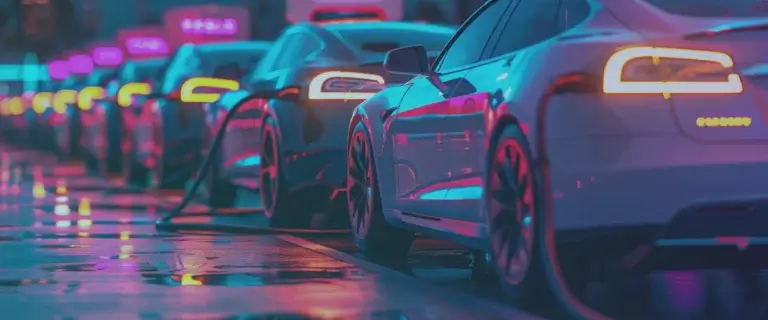EV Industry Trends – Versinetic Looks Ahead
Our EV charging design consultants have been exploring the key EV industry trends likely to emerge across the coming year and beyond.
Here are the team’s EV industry predictions for 2023 onwards as we discuss the road ahead…
- UK EV sales will grow by around 40%
- EV second-hand market will continue to mirror new EV sales market, from 8 years ago
- Energy storage potential will drive EV sales
- Oil market headed for a crash as EV sales rise
- EV prices won’t noticeably reduce in the short-term, but pressure builds on manufacturers
- Rapid increase in fleet sales as we head towards 2030
- Growth in sales and commercial flight certifications in the EV aviation industry
- Hydrogen fuel cell (or combustion) has little future for vehicles
- More giga-factories for automakers
- Increased Lithium Mining to keep up with demand
- Solar power on cars is unlikely
- Democratisation of EVs through affordable alternatives such as car-bike hybrids
- Internal combustion engines will never again achieve ‘most popular car’
- The EV revolution to grow stronger as we near 2030
Let’s go into more detail…
1. UK EV sales will grow by around 40%
We predict EV sales will continue to be positively affected by:
- supply chain stabilisation,
- increased energy security (after Q1),
- renewables;
- a likely oil glut crisis and lower inflation
However, we believe it will be negatively impacted by inflation, austerity and the related cost of living crisis. This means UK sales will likely grow by 40% in 2023, instead of the previous 85% per year (2019 – 2022).
2. EV second-hand market will continue to mirror new EV sales market, from 8 years ago
There’s definitely a demand for 2nd-hand EVs, but not much supply. For example, as of Dec 22, there are 13K EVs on Autotrader , but they’ve held their price really well. This shows that demand is outstripping supply even for 2nd hand EVs, as they are for new EVs.
13K second-hand EVs isn’t a large amount – it’s the total number of new UK EVs sold up to March 2015.
This means it’s very much the opposite to combustion cars where the majority are second-hand.
This is a trend we see progressing through 2023 and beyond.
3. Energy storage potential will drive EV sales
We foresee that in the next few years, the energy storage potential of EVs will start to drive EV sales incentives. This will coincide with announcements for increased grid storage, lithium refineries[1] and Gigafactories based on non-lithium chemistries [2].
4. Oil market headed for a crash as EV sales rise
Given the volatility of fossil fuels in 2022 and the higher than predicted growth of EVs, we believe it’s increasingly likely that an EV driven, oil-glut shock (outlined by Bloomberg in 2016) will strike somewhere in H2. This is an increasing possibility as EV oil displacement crosses the 2m barrels/day threshold [3].

5. EV prices won’t noticeably reduce in the short-term, but pressure builds on manufacturers
EV prices are unlikely to reduce significantly over coming years. However, commercial appearance of more micro-EVs – such as the Citroen Ami, Microlino, Wuling Hongguang Mini EV, Carver EV & the US based CitiQ – will start to put more pressure on EV manufacturers.
6. Rapid increase in fleet sales as we head towards 2030
Fleet sales of EVs will grow rapidly to meet increased online delivery and transport needs. This will be coupled with the increased capabilities of a new generation of EV vans and HGVs [4] from Vauxhall, Mercedes, DAF, Ford and Tesla.
7. Growth in sales and commercial flight certifications in the EV aviation industry
EV aircraft – such as the e-pipestral, Eviation Alice, Wisk, Lillium and Wright Electric aircraft and VTOL air taxis – will make progress in actual sales and commercial flight certification over the coming years.[6].

8. Hydrogen fuel cell (or combustion) has little future for vehicles
Land
In our view, hydrogen fuel cell (or combustion) has no future in almost all vehicles. In cars, it’s already being out-competed by a factor of 200 to 1000. It is being used in some UK buses (including Birmingham), but BEV buses will outcompete them too, as they are 6x more expensive to run [1].
The primary reason is that they’re barely more energy efficient than fossil fuel buses and 3.5x less efficient than EVs [2]. Hydrogen trucks have a similar issue DAF is moving to BEV; smaller vans are moving to BEV; the Tesla Semi is going to be BEV.
Sea
We see a similar issue applied to boats: narrow boats, speedboats and yachts for the wealthy will become electric. This may be the case because narrow boats already have a supply; speedboats don’t need to run for long periods; and yachts could probably be charged via Solar.
Large-scale transport may turn to hydrogen + sail, but we believe most ferries will become battery-operated.
Air
Short haul and private aeroplanes will mostly turn to BEV because they’re much cheaper to run. However, long-haul planes may still be a candidate for hydrogen power.
9. More giga-factories for automakers
We predict more vertical integration to combat supply chains.
10. Increased Lithium Mining to keep up with demand
There’ll be a significant rise in lithium Mining (which is a primarily a process of evaporation from salt flats or sea water). However, we believe it will get much cleaner. We’ll also predict the use of many alternative chemicals too: Iron Phosphate, Sodium, Vanadium, Zinc… for diverse battery requirements.

11. Solar power on cars is unlikely
It’s unlikely that solar power on cars is an answer for charging infrastructure issues. That’s because they don’t allow for a large enough area compared with the total charge needed. E.g., they might provide 330W, which would require about 150 hours to fully charge a Tesla Model 3, or 42 hours for a 14-mile journey.
12. Democratisation of EVs through affordable alternatives such as car-bike hybrids
There’s a lot of movement in that segment; we anticipate that one or more designs, or their derivatives will succeed. Small EVs are likely to be used for the majority of motorised travel in the region of 2km range in the future.
Three elements are required in order for this prediction to progress:
- Relatively cheap, small, EVs.
- Autonomous driving technology: Even the best (Tesla) isn’t really there yet, but is getting closer. It will take a while to migrate that down.
- Ride-hailing and transparent car sharing.
13. Internal combustion engines will never again achieve ‘most popular car’
An EV became the most popular car in Europe in September ‘22 and the same car is likely to become the number 1 vehicle in the world, in 2023 (Tesla Model Y). While this is the first time an Electric Vehicle managed the feat and marks a huge shift, we don’t expect an ICE (internal combustion engine) vehicle to top the list again – ever.
14. The EV revolution to grow stronger as we near 2030
Expect to see many changes in energy distribution and storage in the months ahead. Whole markets for conversations, charging, maintenance, etc will crop up. Before big giants like BP/Shell/Esso/Texaco etc owned the petrol sites, now so many smaller charging companies are appearing, with home charging, office charging, fast DC and slower AC it will be a very different landscape in the next decade.

WHAT ARE YOUR PREDICTIONS?
Do our expectations for 2023 & beyond EV industry trends line up with yours? Let us know on our social media channels, or by contacting us through the website, we would love to hear from you!



